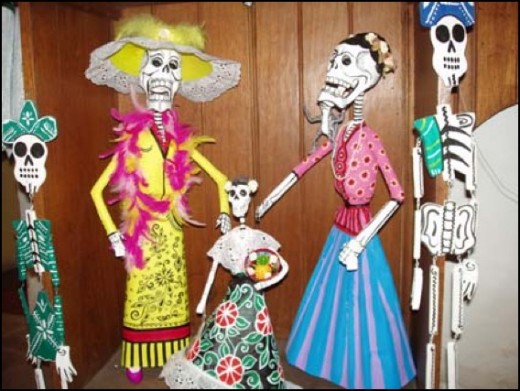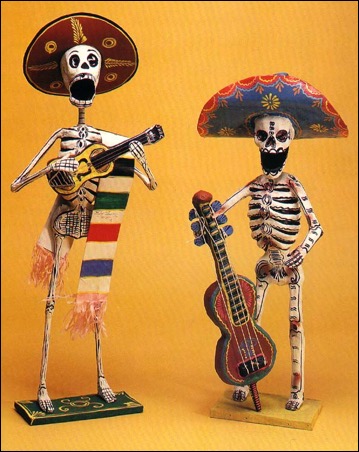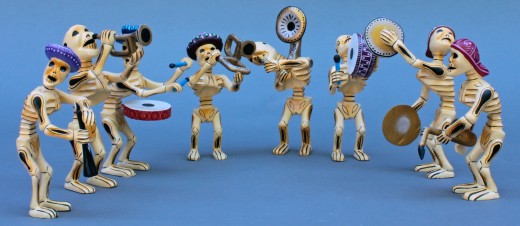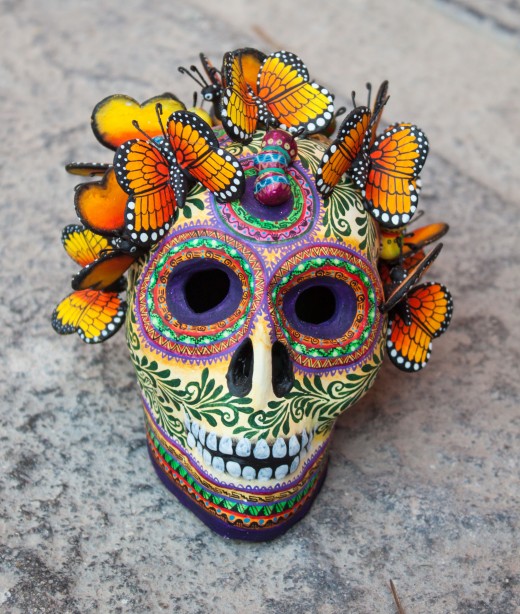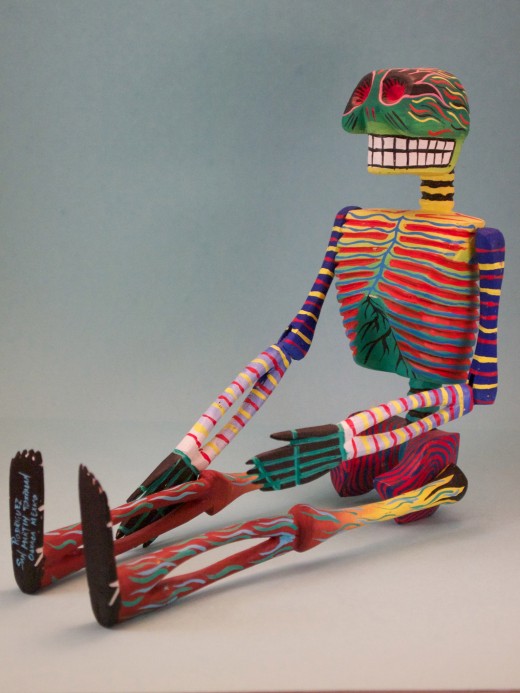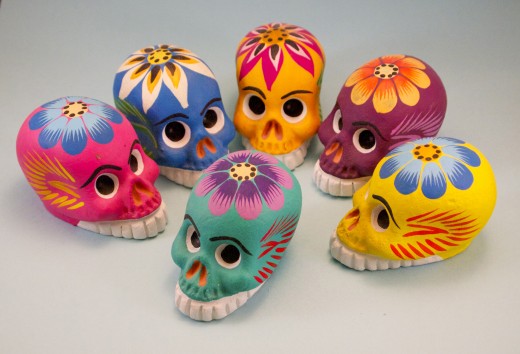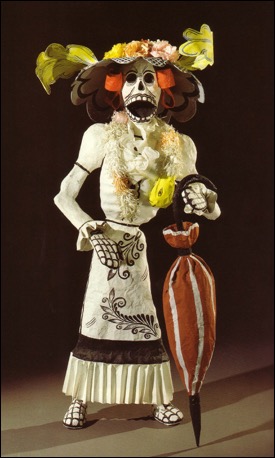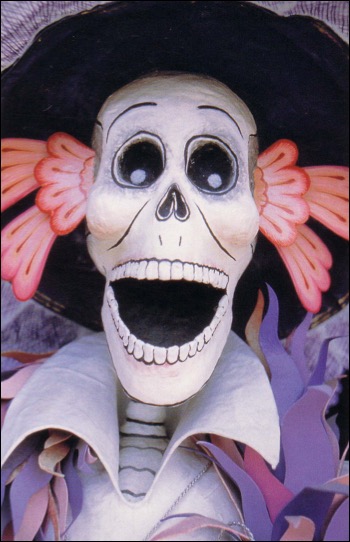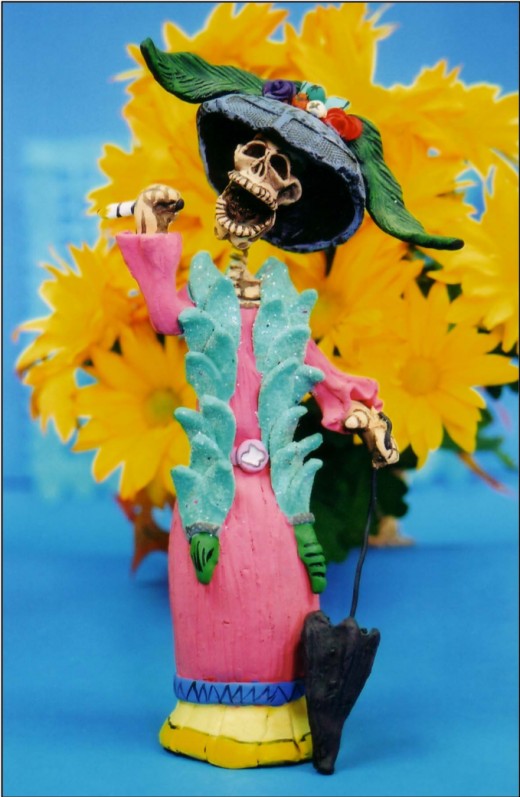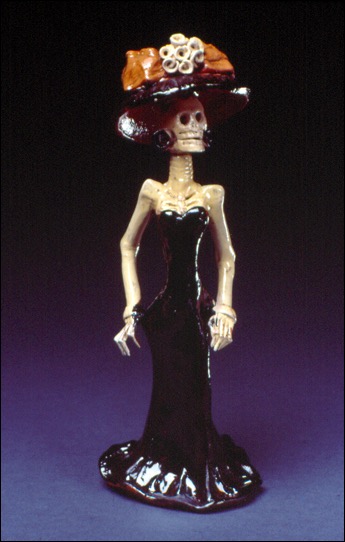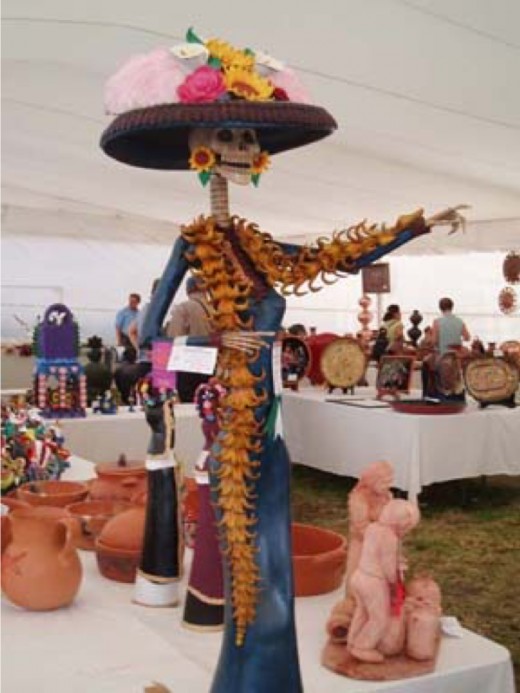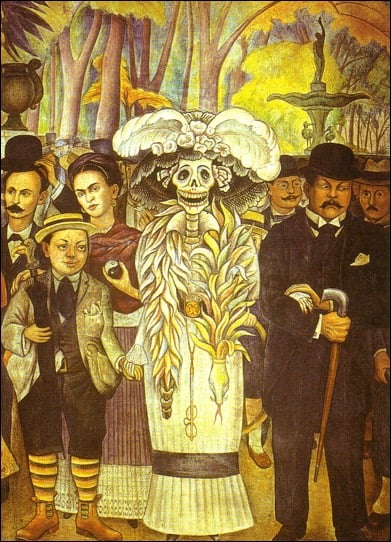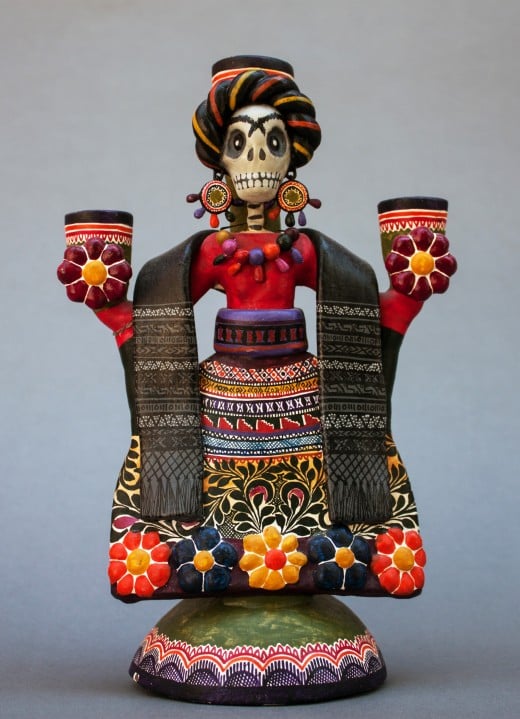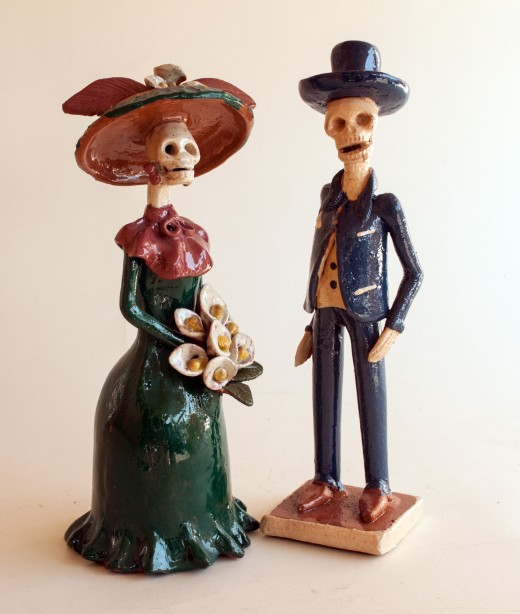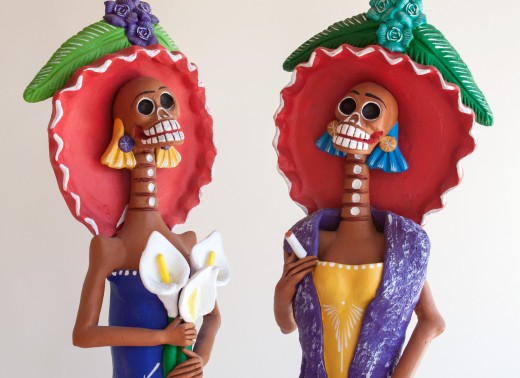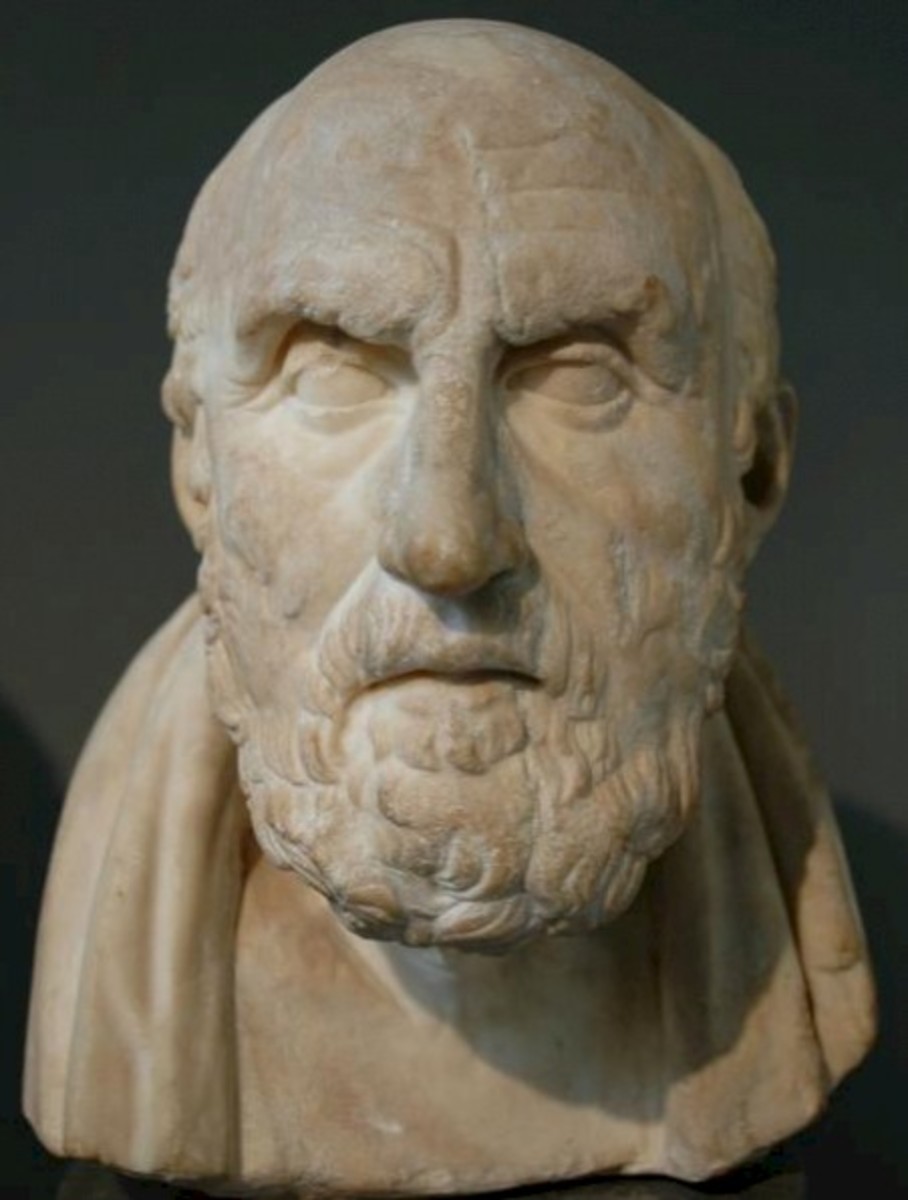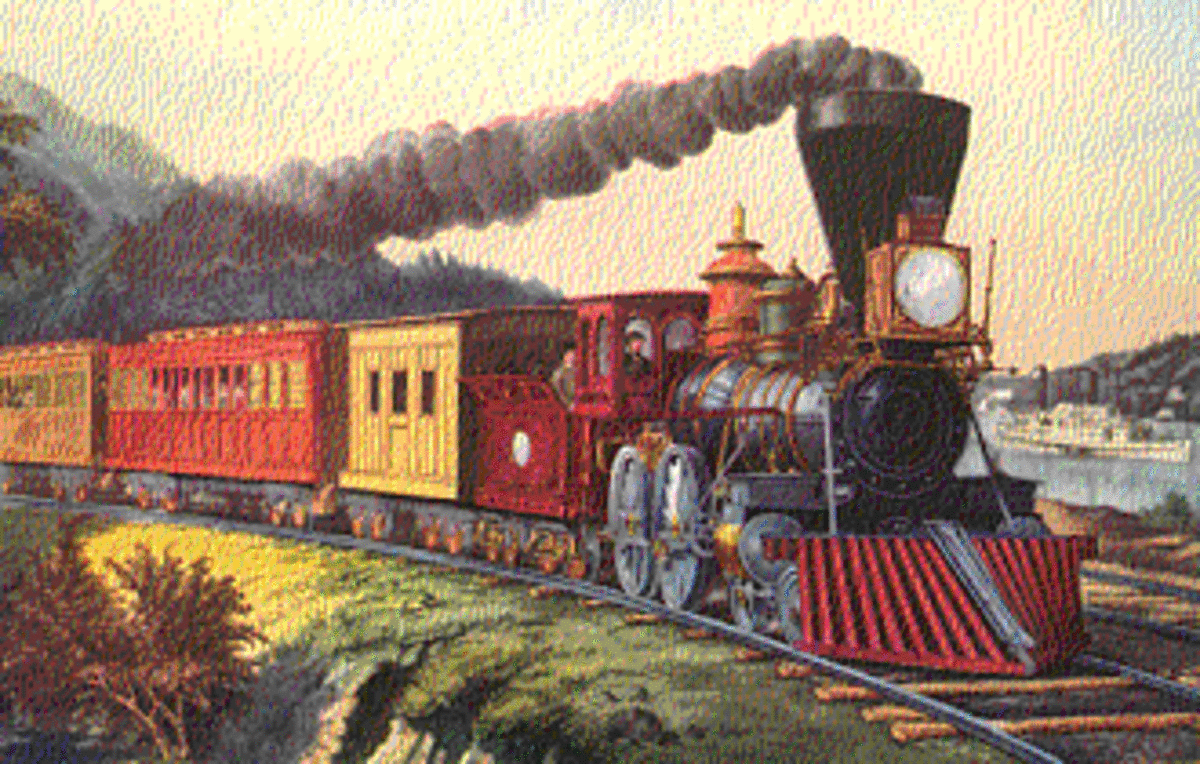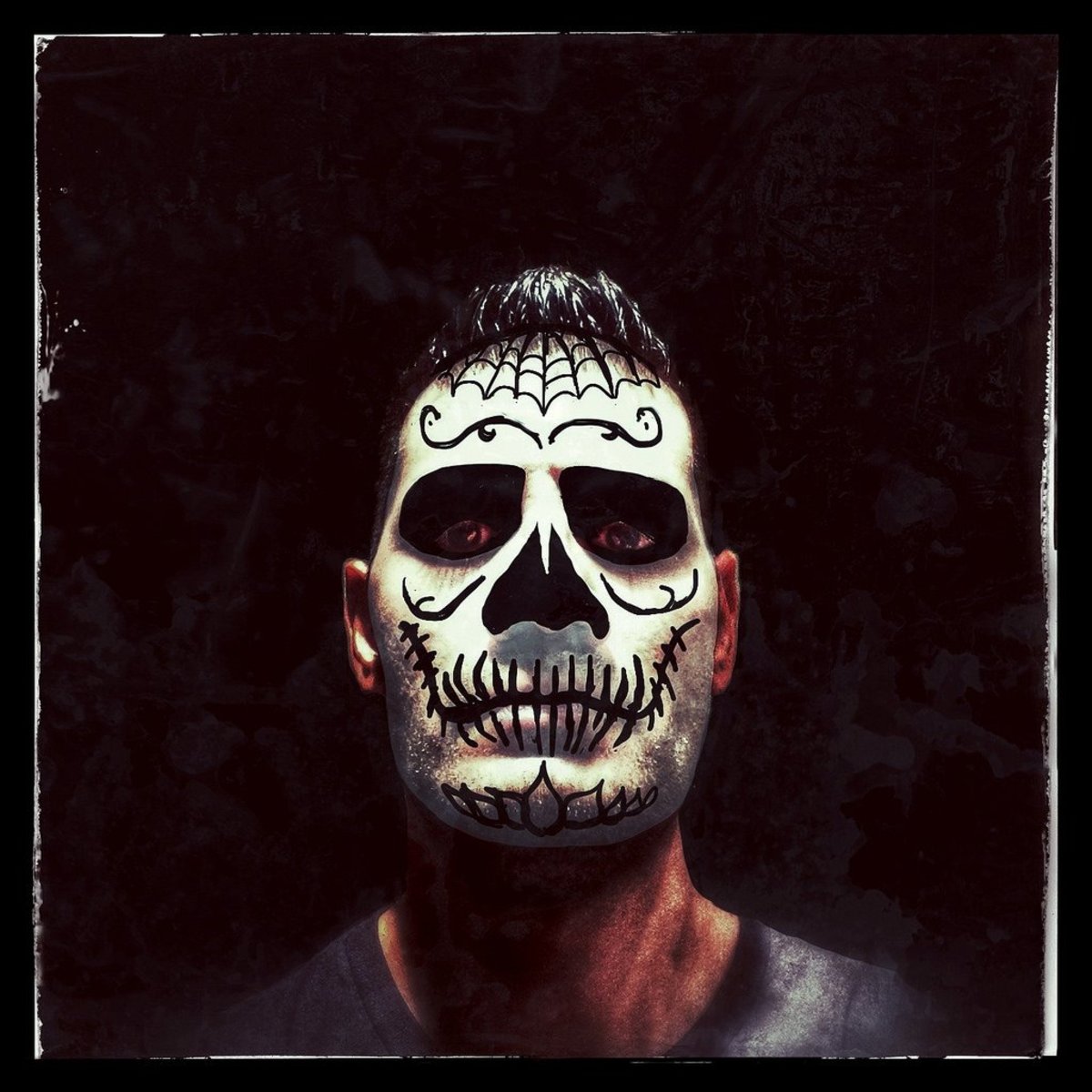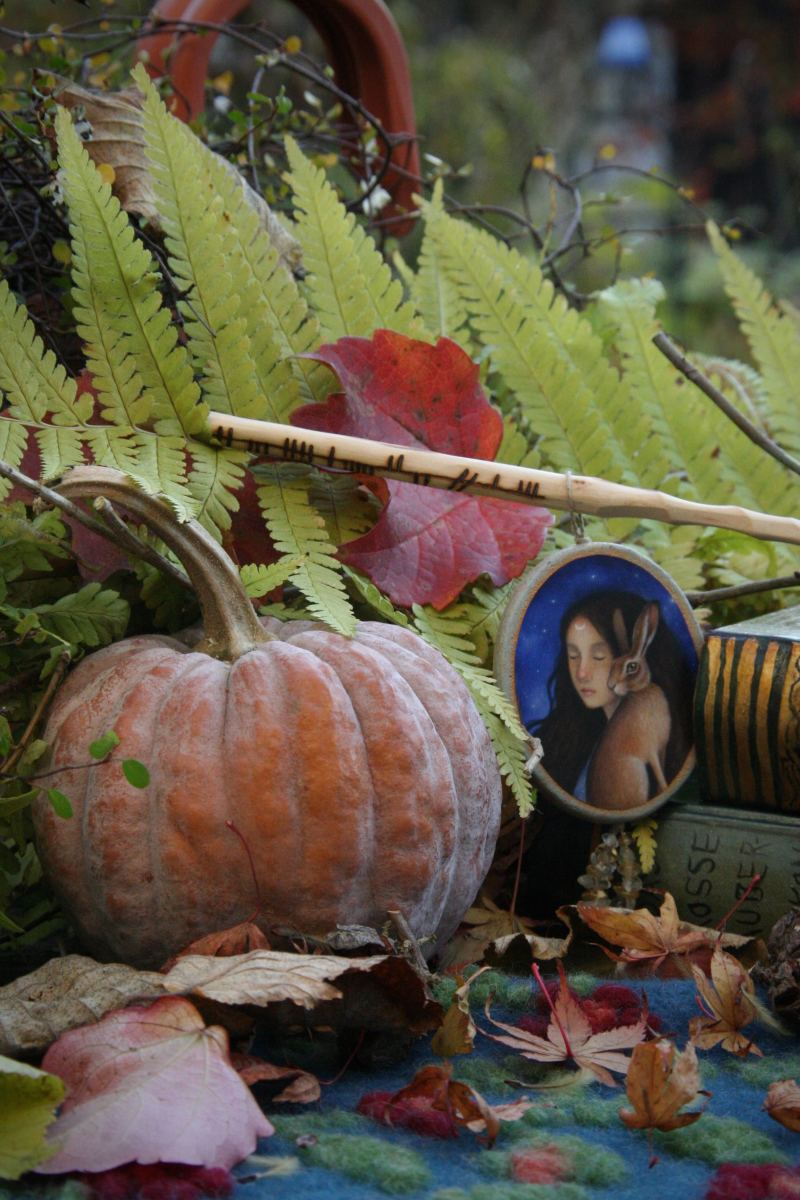Laughing Skulls and Dancing Skeletons - What's with All the Weird Day of the Dead Imagery?
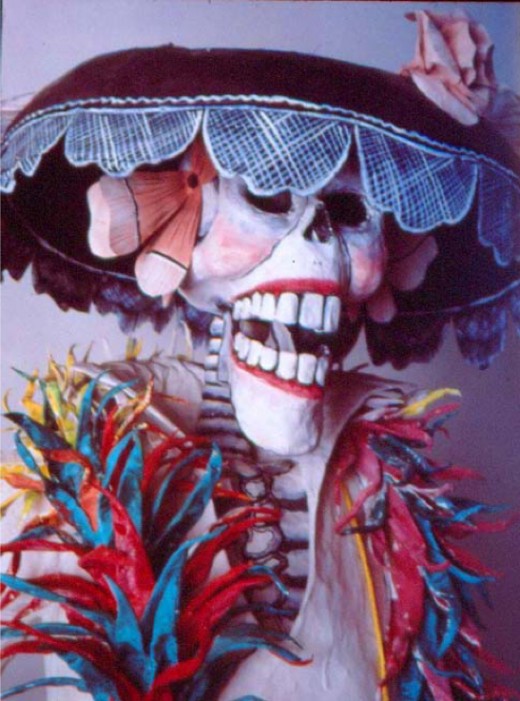
Grinning skeletons wave to the crowds from balconies high above the street. Others, life-sized or even larger, are positioned at the entrances to stores, hotels and other public buildings. Made of nearly every material imaginable—wood, clay, metal, papier-mâché—they bear no trace of malice as they cheerily greet visitors. Scenes such as this are common during Day of the Dead festivities, and the preponderance of death images is one reason that those not familiar with the celebration may view it as morbid or macabre. But the holiday has inspired a rich folk art tradition; the skulls and skeletons are intended to be humorous and are created in recognition of the fragility of life.
Laughing Skulls and Dancing Skeletons
Click thumbnail to view full-size





To the inhabitant of New York, Paris, or London, death is a word that is never uttered because it burns the lips. The Mexican on the other hand, frequents it, mocks it, caresses it, sleeps with it, entertains it; it is one of his favorite playthings and his most enduring love.
— Octavio Paz, “The Labyrinth of Solitude”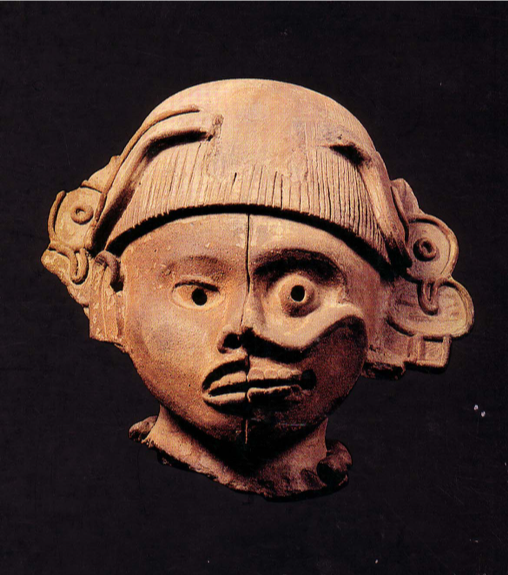
Background and History
The Day of the Dead is a time when families in Mexico and other Latin American countries honor and remember loved ones who have died. The celebration and the imagery associated with it have roots in pre-Hispanic cultures. Remembrances of the dead formed an important part of ancient harvest festivals, and images representing death are found in pottery and carvings at archeological sites ranging from southern Mexico to the Gulf Coast, and central Mexico. In the post classic period (900-1520 CE), during the era of the Aztecs, death imagery was especially prevalent.
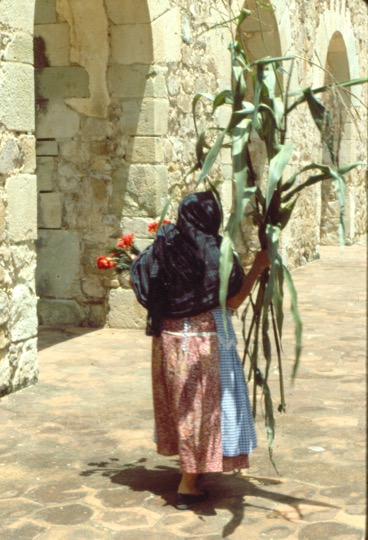
The Christian tenet of eternal life after death was introduced with the arrival of the Spanish in 1519, and the ancient observation of the cycles of nature became intermingled in the celebration of the Day of the Dead, which combines the Catholic traditions of All Saints’ Day and All Souls’ Day (November 1st and 2nd, respectively) with the pre-Hispanic concepts of death.
José Guadalupe Posada – The Father of Day of the Dead Fok Art
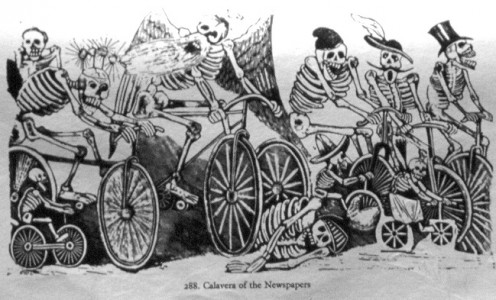
More recently, the work of Mexican illustrator José Guadalupe Posada (1852–1913) has come to be closely associated with the Day of the Dead, and serves as a bridge between the pre-Hispanic imagery and its expression in contemporary folk art. A political cartoonist and printmaker, Posada frequently depicted politicians and other important figures as skeletons in his work. His intention was to poke fun at the wealthy and to remind people that, in death, all souls are equal.
La Catrina
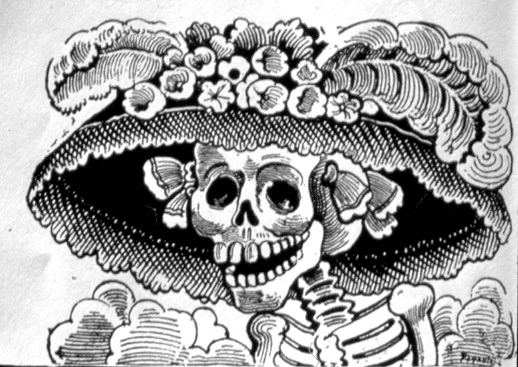
Of the many figures and symbols associated with the Days of the Dead, Posada’s image of “Catrina,” an elegant and well-dressed female skeleton, is probably the most popular and well-known. Originally meant to satirize the life of the upper classes during the reign of Porfirio Diaz, Catrina can be seen all over Mexico and has served as inspiration for many artists—both past and present—who recreate the popular icon in virtually every medium. Although Catrina is a common name, Posada had a little fun with it. A Catrin” is a “dandy or fancy man, and Catrina is its female equivalent.
La Catrina Has Inspired Many Artists - Both Past and Present
Click thumbnail to view full-size








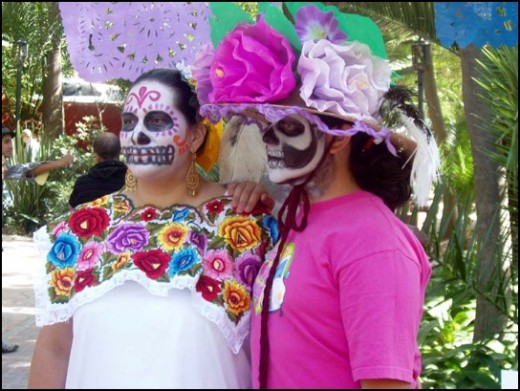
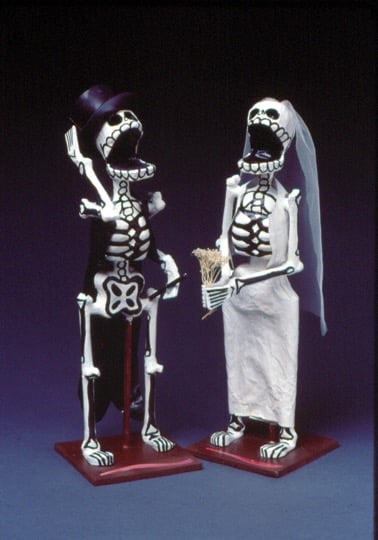
Today, folk art pieces featuring skeletons and skulls are found in many sizes, shapes, and colors. While they may at first seem macabre to some, the images are not meant to be frightening or unpleasant. Instead, they reflect the Mexicans’ honest appraisal of human mortality and an understanding and acceptance of death as a natural part of life.
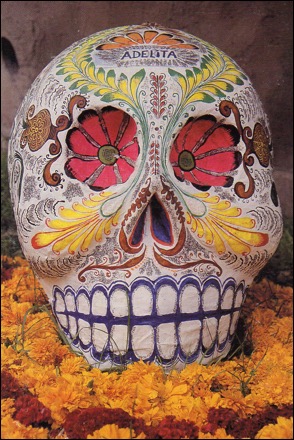
Your Thoughts?
What do you think of the imagery in Day of the Dead Folk Art?
Source
Williams, Kitty, and Stevie Mack. Day of the Dead Folk Art. Gibbs Smith, 2015.
© 2019 Kitty Williams Fisher

